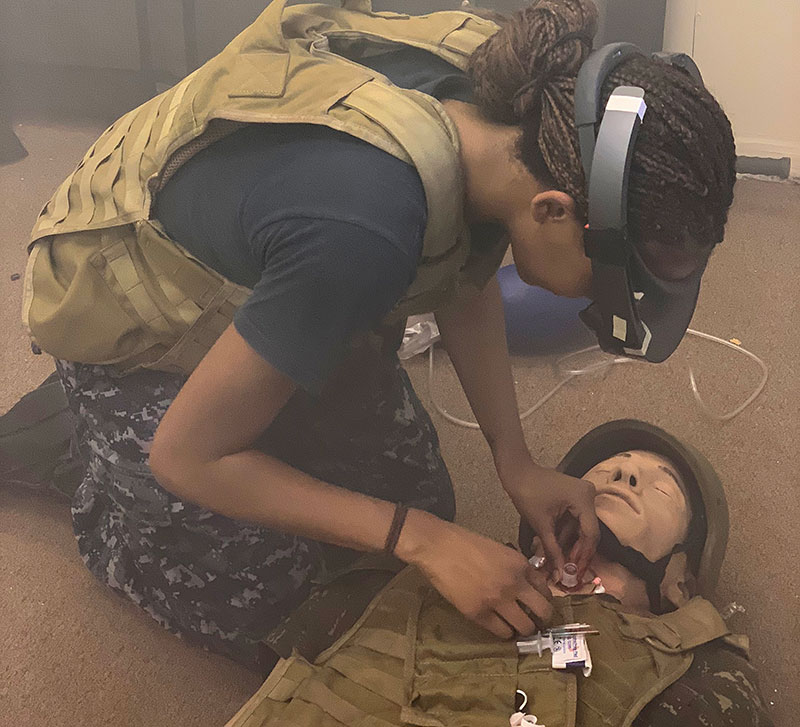When a soldier is wounded in the battlefield, it becomes very difficult to give them proper care, because operating rooms are too far from the battlefield. Generally, the Wounded in Action are far more numerous than those killed.
A team of researchers from Purdue University and the Indiana University School of Medicine has developed an augmented reality (AR) telemedicine system that can be successfully used in very difficult and stressful situations. The researchers named their system ‘STAR’ (System for Telementoring with Augmented Reality), reports Purdue University.
Their study shows medics successfully performing surgery in life-like simulations of these war zones by receiving guidance from surgeons through an augmented reality headset. The work is joint with Purdue’s School of Industrial Engineering and the Department of Computer Science.
Read more COVID-19 Pandemic Will Propel US Telehealth Market To Grow At A CAGR of Over 29% During 2019-25
The headset transmits a recorded view of the operating site to the surgeon, who can then use a large display touch screen to mark up the recording with drawings of how to complete the surgical procedure. Augmented reality helps the first responder see the surgeon’s annotated instructions directly on their view of the operating field.
Operating rooms across the U.S. have already started using AR telementoring to virtually bring in the expertise of other surgeons on how to use a new instrument or better perform a particular procedure.

But this technology hasn’t made it to “austere” settings, such as a battlefield or forest thousands of miles away from a hospital, where a first responder could be treating injuries far too complex for their level of expertise, said Juan Wachs, Purdue University’s James A. and Sharon M. Tompkins Rising Star Associate Professor of Industrial Engineering.
“Augmented reality telementoring doesn’t usually operate well in extreme scenarios. Too much smoke can prevent visual sensors from working, for example,” Wachs said.
The study evaluated first responders using STAR to perform on a patient simulator a common procedure that opens up a blocked airway, called a cricothyroidotomy. Even the responders with no or little experience performing this procedure prior to the study successfully operated after receiving instructions from surgeons through STAR.
Read more Philips Healthcare Signs Deal with US Air Force for Remote Patient Monitoring
The simulations took place both indoors and outdoors, including smoke and sounds of gunshots, explosions and helicopters. The researchers found that first responders more successfully performed the cricothyroidotomies with STAR than with just hearing a surgeon’s voice for each of these scenarios. If smoke made the visualization too unreliable, the responders could still do the operation when STAR automatically switched to audio-only telementoring.












